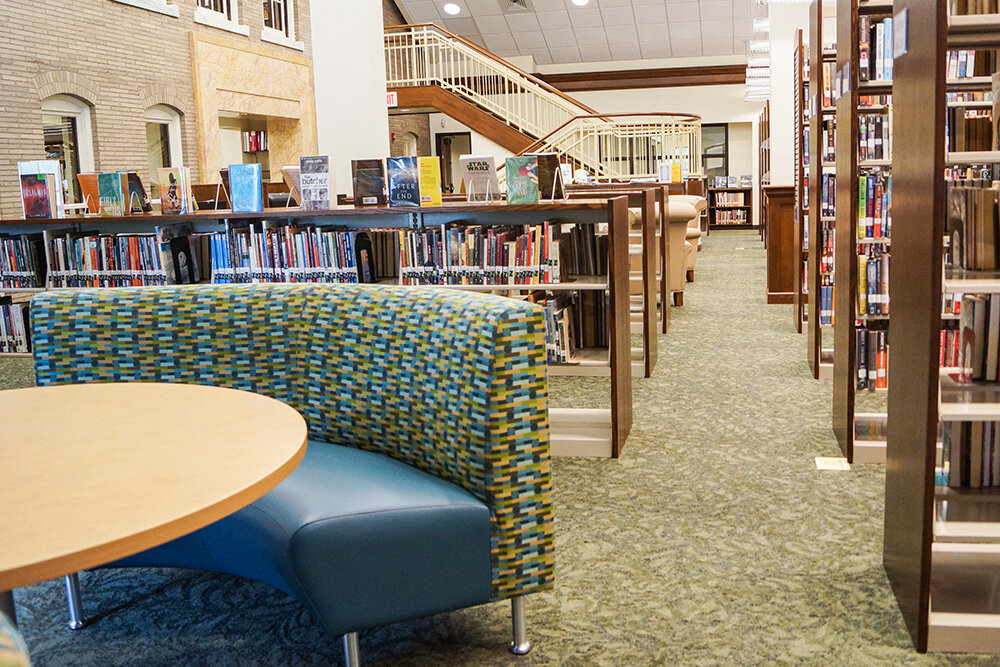State Will Support Public Libraries With $2.6M in Coronavirus Relief Funds
/Governor Ned Lamont is dedicating $2.6 million of Connecticut’s Coronavirus Relief Funds to support the state’s public libraries as they continue to make health and safety improvements and offer more services to residents amid the ongoing COVID-19 pandemic, it was announced Wednesday.
The governor said the funds will be distributed among 65 libraries across Connecticut, based on their size and the number of residents they serve each year, which will allow much of the funding to particularly target those that serve low-income urban and rural communities. The funds are anticipated to be largely used to purchase personal protective equipment (PPE), cleaning supplies, signage, and furniture.
The funding is in addition to the Lamont administration’s ongoing initiative to increase broadband infrastructure and create public Wi-Fi hotspots that offer free internet access, including at many libraries across the state.
“Libraries offer critical services for the public, including reliable Wi-Fi, access to computers and laptops, supportive learning materials and resources, and librarians who are trained in helping residents access key services,” said Governor Lamont. “Most importantly, libraries provide safe and quiet spaces for people to work and study, which is critical to many people who do not have the environment to do this at home. Especially during this difficult time, libraries and the work of so many generous librarians have played a critical role in supporting K-12 and post-secondary students with remote learning.”
The ongoing pandemic, and this summer’s extended power outages due to a tropical storm, have underscored the role of libraries. A Bloomberg news story highlighted the number of finance industry executives, working from home, who headed to the local Darien Library to seize power, so to speak.
“People stay late and get here early,” Caroline Lopez, acting director of Darien Library, told Bloomberg. “There’s always people inside the library and anywhere from 50 to 100 outside hanging around the building using WiFi at any given time.”
The news service reported “about 20 people working outside the local library at 6 a.m., three hours before the building opens. It was one of the only places in town with power and some arrived with beach chairs, while others wore suits for Zoom meetings. One trader set up his desk with two monitors at a picnic table, capitalizing on the wireless Internet access outside the library building.”
Libraries have a well-earned reputation as go-to places for an increasing number of services, such as youth seeking to stay connected to their classrooms, and others from whom internet service required for employment – or job searches – can be elusive.
“This investment in our public libraries will enable their leaders and staff to extend and enhance the services and programs that are so valued and important to their constituents and communities,” said Interim State Librarian Maureen Sullivan. “Public libraries have always been places that support education and self-directed learning. They are now a critical community resource for virtual learning.”
“Our public libraries, the librarians, and the services they offer are tremendous assets to the residents of the state, especially for our K-12 students as schools reopen,” said Office of Policy and Management Secretary Melissa McCaw, who has been overseeing the distribution of the Coronavirus Relief Fund on behalf of the Lamont administration.
“With these federal resources, we can help our local and community libraries with their health, safety, and technological needs so that our students can study, read, and write in a warm and safe place while alleviating some of the burden for our local governments. As the libraries expand their capacity, it is essential we assist where we can to ensure it is done safely and to enhance the odds of success for students under these unique circumstances,” McCaw added.
Libraries closed in March amid the initial outbreak of the pandemic, however they opened with 50 percent capacity when Phase 2 of Connecticut’s reopening efforts began in June. They will be permitted to increase the capacity to 75 percent when Phase 3 begins on October 8. The Connecticut Library Consortium has been among the organizations working to connect libraries with the pandemic-related supplies they need to maintain safety protocols, trying “to provide members with a variety of options” in each equipment category, from PPE to Plexiglas barriers, sanitizer to signage.
“Libraries serve as important resource hubs outside of the classroom by providing students and their families with equitable access to engaging programs, supports and multimedia learning materials at no cost,” said Connecticut Education Commissioner Miguel Cardona. “As we make progress to close the digital divide and meet the remote learning needs of our students, we must do all everything we can to continue to support the crucial role our librarians and libraries play in this area by enhancing the overall educational experience for all learners in their communities.”































